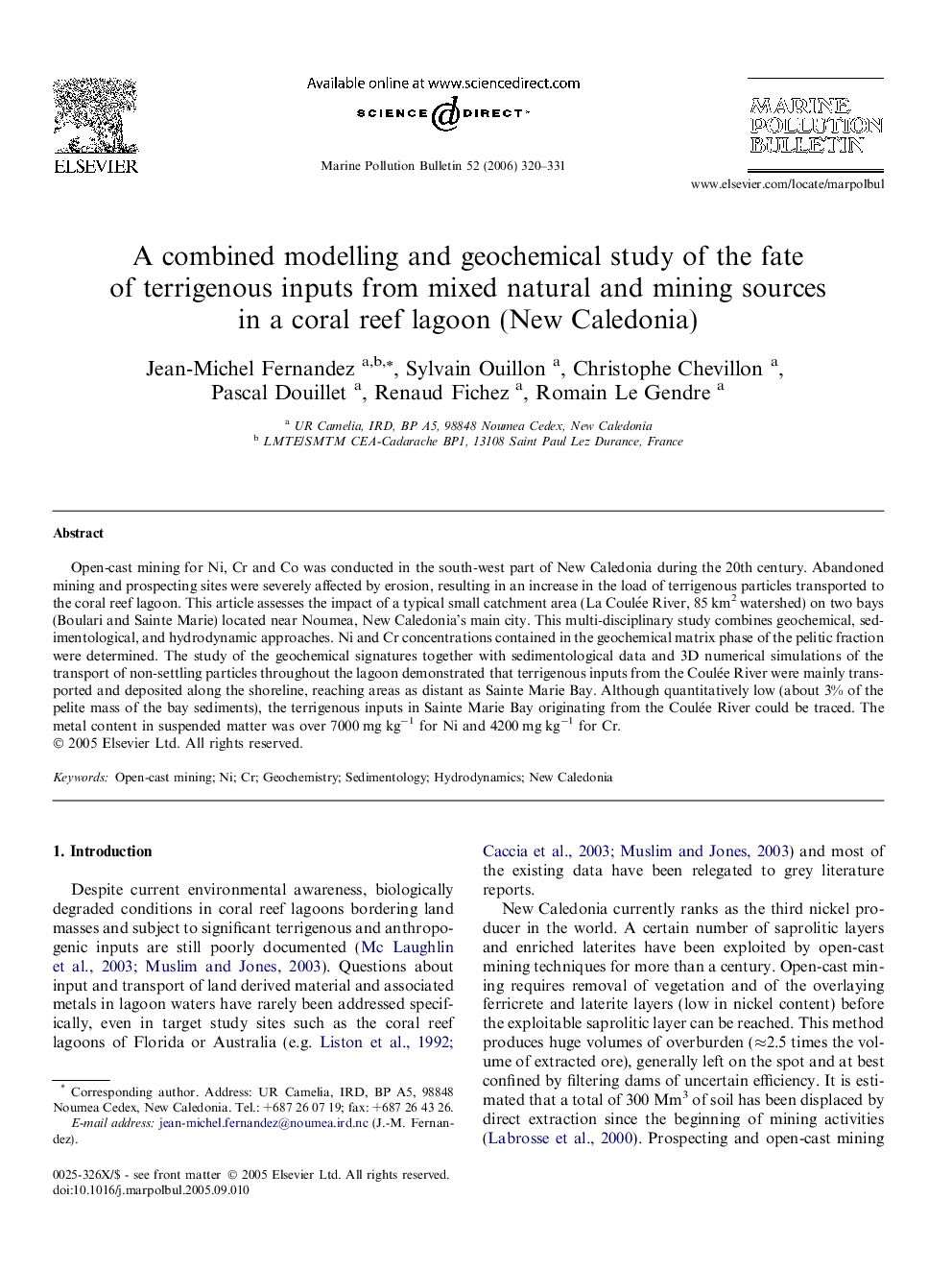| Article ID | Journal | Published Year | Pages | File Type |
|---|---|---|---|---|
| 4478145 | Marine Pollution Bulletin | 2006 | 12 Pages |
Abstract
Open-cast mining for Ni, Cr and Co was conducted in the south-west part of New Caledonia during the 20th century. Abandoned mining and prospecting sites were severely affected by erosion, resulting in an increase in the load of terrigenous particles transported to the coral reef lagoon. This article assesses the impact of a typical small catchment area (La Coulée River, 85 km2 watershed) on two bays (Boulari and Sainte Marie) located near Noumea, New Caledonia's main city. This multi-disciplinary study combines geochemical, sedimentological, and hydrodynamic approaches. Ni and Cr concentrations contained in the geochemical matrix phase of the pelitic fraction were determined. The study of the geochemical signatures together with sedimentological data and 3D numerical simulations of the transport of non-settling particles throughout the lagoon demonstrated that terrigenous inputs from the Coulée River were mainly transported and deposited along the shoreline, reaching areas as distant as Sainte Marie Bay. Although quantitatively low (about 3% of the pelite mass of the bay sediments), the terrigenous inputs in Sainte Marie Bay originating from the Coulée River could be traced. The metal content in suspended matter was over 7000 mg kgâ1 for Ni and 4200 mg kgâ1 for Cr.
Related Topics
Physical Sciences and Engineering
Earth and Planetary Sciences
Oceanography
Authors
Jean-Michel Fernandez, Sylvain Ouillon, Christophe Chevillon, Pascal Douillet, Renaud Fichez, Romain Le Gendre,
